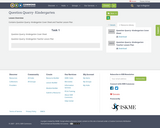
Contains Question Quarry- Kindergarten Cover Sheet and Teacher Lesson Plan
- Subject:
- Elementary Education
- Material Type:
- Lesson Plan
- Author:
- Meghan Haley
- Date Added:
- 07/15/2019

Contains Question Quarry- Kindergarten Cover Sheet and Teacher Lesson Plan
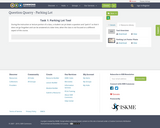

Este caderno é um produto da pesquisa de mestrado da autora pelo programa de Mestrado Profissional em Ciências Ambientais – PROFICIAMB. Nele estão reunidos os elementos que constituíram o Quintal Agroecológico na Escola Municipal de Ensino Básico Carmine Botta, na cidade de São Carlos – SP, e as principais atividades práticas de Educação Ambiental (EA) para alunos do 5° ano do ensino fundamental. O objetivo é divulgar as atividades da pesquisa que permitiram ampliar os recursos didáticos e confirmar o potencial pedagógico do Quintal Agroecológico na Escola como um “laboratório ao ar livre” para o ensino de EA.
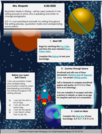
This Remote Learning Plan was created by Beth Einspahr in collaboration with Eileen Barks as part of the 2020 ESU-NDE Remote Learning Plan Project. Educators worked with coaches to create Remote Learning Plans as a result of the COVID-19 pandemic.The attached Remote Learning Plan is designed for Grade 5 writing students. Students will use quotation marks and corresponding punctuation correctly when editing. This Remote Learning Plan addresses the following NDE Standards: 5.2.1.h, 5.3.3.c, 5.4.2.b.

This Remote Learning Plan was created by Beth Einspahr in collaboration with Eileen Barks as part of the 2020 ESU-NDE Remote Learning Plan Project. Educators worked with coaches to create Remote Learning Plans as a result of the COVID-19 pandemic.The attached Remote Learning Plan is designed for Grade 5 writing students. Students will use quotation marks and corresponding punctuation correctly when editing. This Remote Learning Plan addresses the following NDE Standards: 5.2.1.h, 5.3.3.c, 5.4.2.b.
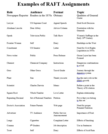
Students use the format of RAFT to help with their writing skills in their ELA courses.
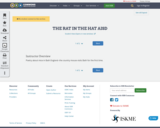
Poetry about mice in Bath England--the country mouse visits Bath for the first time.

Meet ROBO!As a simple, environment and design-friendly robot, ROBO is your hub to create, contribute, and learn through fun and unique activities. From simple self-regulated learning prompts to simple programming to making your own block-based or JavaScript code to personalise this robotic woody friend, ROBO focus on supporting your learning experience and learner progression. This manual will give you everything you need to get started!Learning Objectives:I know what ROBO can doI can play with ROBOI can use ROBO to set a timer to learn, take a break, and motivate myselfI can remix some of ROBO functions
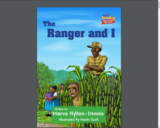
Description
The Ranger and I is a moving narrative of a day in the lives of some young children at a primary school in a rural Jamaican community. These students are always picking mangoes after school and then helping themselves to the sugar canes on the roadside. The rangers are always on the look-out for cane thieves. Whenever the canes are ready for reaping, the students have fun in the cane fields, despite the rangers’ attempt to stop them. On this particular day, however, the students are caught in the act by the rangers. The events that follow keep them literally on their feet as the rangers confront them. Dally, one character in the story, is affected the most as the students run for their lives in a bid to escape the rangers.
The Ranger and I is a must- read as the writer reminisces on school day events in the mango trees and on the sugar estate. The never-ending suspense should keep young readers at the edge of their seats.
This book is available for download (pdf) from the catalogue of the Jamaica Library Service at https://catalogue.jls.gov.jm/ .
CURRICULUM LINK
The book 'The Ranger and I' was written to support teaching and learning activities in the Jamaican National Standards Curriculum (NSC). It can be used as a resource to help students develop their comprehension skills and where appropriate, initiate a discussion on how they spend their leisure time.
See below for the Grade 2 curriculum references.
LANGUAGE ARTS
Literacy Strand: Comprehension (page 162)
Objectives:
-Tell how they feel about the story
-Record elements and details of a story using the (5 W’s); Who, What, Where, When, Why
-Identify the characters in the story and cite evidence
-Identify the main idea and supporting details in the story
INTEGRATED STUDIES
Sub-theme: Satisfying our needs (page 57)
Focus Question: Why do I need recreation and how can I spend my leisure time?
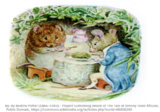
In this seminar you will learn how to read, compare, and analyze two stories. You will be able to communicate in writing by comparing and contrasting two stories, and by citing evidence from the story to help you to support your answer to the questions that will follow. This is a fun fictional story for you to read, this will help you to be able to analyze and show evidence for your position on many things that affect the world that you live in today.StandardsCC.1.3.5.B Cite textual evidence by quoting accurately from text to explain what the text says explicitly and make inferences.

In this seminar you will learn how to read and analyze a story about making cactus jam. You will be able to communicate in writing the steps that it takes to make cactus jam by using evidence from the story to help you to support your answer to the questions that will follow.StandardsC.C.1.2.3 B Ask and answer questions about the text and make inferences about the text; refer to text to support response.C.C.1.3.5B Cite textual evidence by quoting accurately from the text to to explain what the text says explicitly and make inferences.
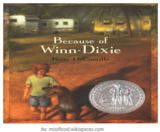
Completion of this seminar will allow you to understand and use the R.A.C.E.S. strategy for answering text dependent analysis questions. This is a well-known strategy to use in the second paragraph of a TDA response. You will read, answer questions, and learn how to communicate effectively by writing and citing evidence about a story called Because of Winn Dixie.StandardsC.C. 1.2.3B Ask and answer questions about the text and make inferences about the text. Refer to the text to support your answers.C.C.1.3.5 B Cite textual evidence by quoting accurately from the text to explain what the text says explicitly and make inferences.
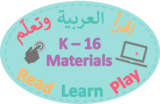
Read, Learn and Play: Online Interactive Arabic Reading Materials provides original reading texts in the form of shareable eBooks and audio books alongside virtual online practice activities that focus on reading, writing, and comprehension building. The materials are designed according to Comprehensible Input (CI) theory and the Teaching Proficiency Through Reading and Storytelling (TPRS) method and are aligned to novice, intermediate and advanced ACTFL proficiency benchmarks and are designed for non-heritage K-16 language learners. This project was created with support from the U.S. Department of Education’s International Research and Studies Program.
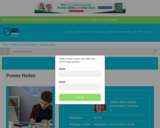
Provides instruction on finding main and supporting ideas when taking notes.
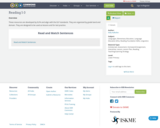
These resources are developed by ELPA and align with the ELP standards. They are organized by grade band and domain. They are designed to be used as lessons and for test practice.
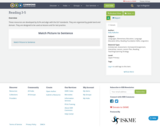
These resources are developed by ELPA and align with the ELP standards. They are organized by grade band and domain. They are designed to be used as lessons and for test practice.

These resources are developed by ELPA and align with the ELP standards. They are organized by grade band and domain. They are designed to be used as lessons and for test practice.
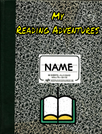
Students will connect with literature as they complete activities in their digital "Reading Adventures Journal."

Rationale: This activity will provide an alternative to traditional activities on French families offered in a lot of textbooks, and will get students engage with an authentic material: an excerpt from a contemporary Francophone “bande dessinée”. While some students may already know traditional Francophone comics such as Tintin or Astérix, this activity is here to provide them with a more recent and more diverse example. Aya de Yopougon is centered on a young female character growing up in Yop City, a fictional city very similar to writer Marguerite Abouet’s own native city (Abidjan, Ivory Coast). The “reading” phase of this activity is designed to encourage collaborative reading.

This unit is designed to prepare teacher candidates to assess and instruct students to improve reading fluency in a K-5th grade classroom. In the unit, participants will learn about the three components of fluency, consider the impact of fluency in relation to comprehension, and investigate strategies leading to reading fluency using a structured literacy approach to teaching reading. The total time to complete this assignment is approximately 6 hours.